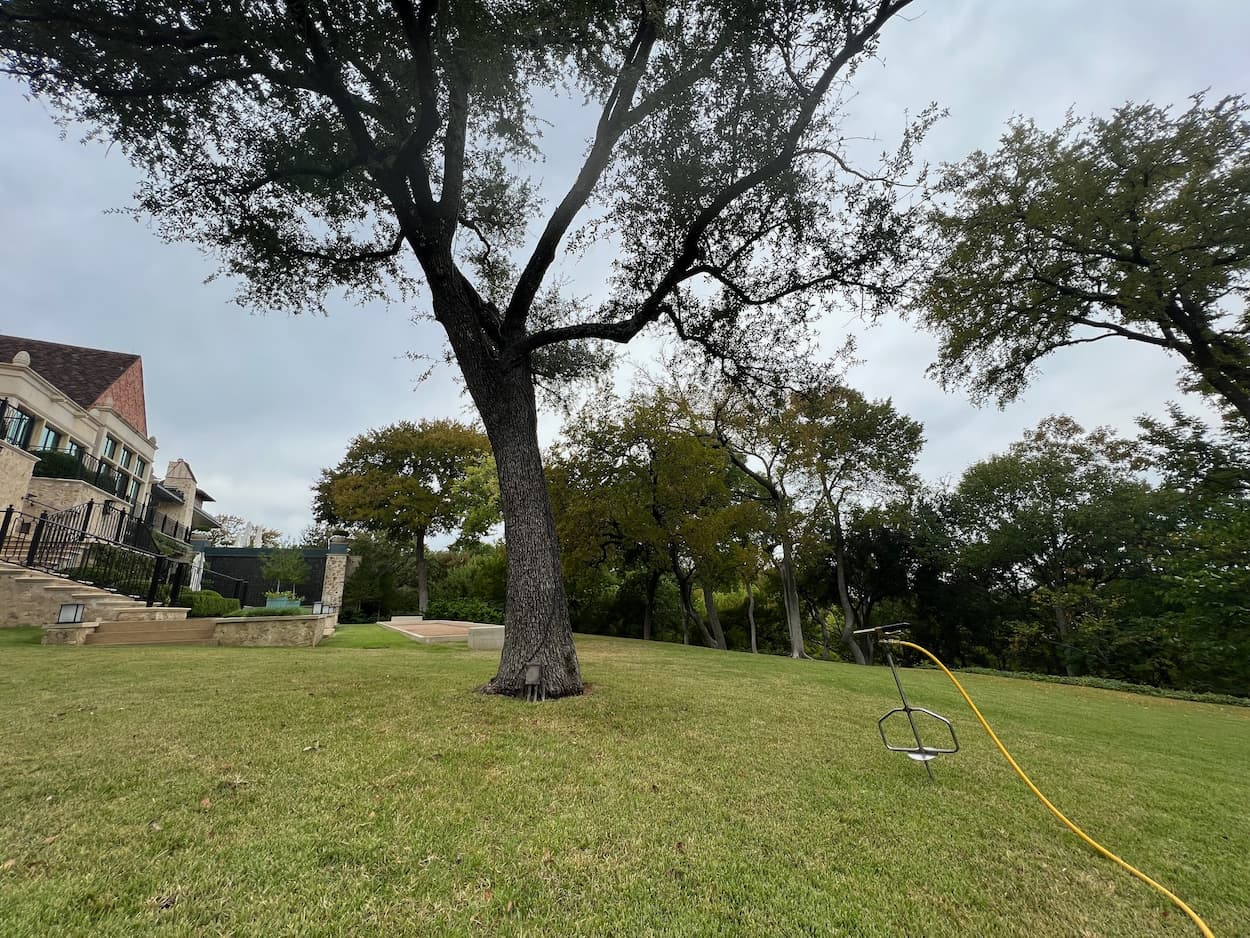Texas Shrubs & Tree Health Care Experts
Caring For Texas Shrubs & Trees Since 1990 Get A Free QuoteCall (817) 880-6130Tree & Shrub Pest Treatment Services in Hubbard, TX
Our ISA Certified Arborist Can Help Treat Your Trees and Shrubs From Pests in Hubbard, TX.
Arborist USA provides Tree & Shrub Pest Treatment Services in Hubbard, Texas, and the surrounding areas.
Hubbard, Texas, boasts an array of vibrant trees and shrubs, contributing to the beauty and tranquility of the town. Effective pest treatments, however, are essential to maintaining the health and growth of this verdant greenery. Here’s an in-depth look at the strategies employed in Hubbard to protect its trees and shrubs.
In summary, tree and shrub pest treatments in Hubbard, Texas, involve a multi-pronged approach including prompt pest identification, regular monitoring, suitable pest control measures, the involvement of professional arborists, the selection of appropriate treatments, routine care of trees and shrubs, implementing Integrated Pest Management, consideration of ecological balance, community participation, and building education and awareness. Individually, each point plays a crucial role; together, they ensure Hubbard continues to boast beautiful, healthy trees and shrubs.
If you are in need of Tree & Shrub Pest Treatment Services in Hubbard, TX, please get in touch with Arborist USA today by calling us at (817) 880-6130, your Tree & Shrub Disease Specialist.
Signs of a Sick Tree or Sick Shrub
- Dead Branches
- Yellowing Leaves
- Fungi or Decay
- Bark Falling Off
- Discolored or Rusted Leaves
- Dying Tree or Shrub
- Leaf Discoloration
- Root or Insect Damage
- Leaves look like they’re being eaten
- Bark is Peeling
- Holes in leaves
- Holes on Bark or Branches
- Stunted Growth
- Canopy Dieback
- Bark Abnormalities
- Wilting
Tree & Shrub Helpful Tips
1. Swift Pest Identification:
The initial step in any pest treatment plan is determining the enemy. Proper identification of pests, whether they’re beetles, aphids, or disease-causing organisms, is crucial. This allows for targeted and effective treatment.
2. Routine Monitoring and Inspection:
Preventive inspections and monitoring are key to maintaining the health of Hubbard’s trees and shrubs. Regular checks for discolored leaves, unusual growth patterns, or premature leaf drop can provide early warning signs of pest infestations.
3. Immediate Pest Control Measures:
Timely action upon detecting pest infestation minimizes damage and hastens recovery. Depending on the severity, interventions can range from minor treatments to extensive disease control measures.
4. Engaging Certified Arborists:
Professional arborists play a significant role in maintaining the health of trees and shrubs. Their expertise allows for accurate diagnosis and treatment of diseases, contributing to the overall success of pest control efforts.
5. Appropriate Pest Treatments Selection:
Selecting the right treatment based on the type of pest and level of infestation is vital. Treatment options may range from biological controls to chemical treatments or even manual removal of pests.
6. Consistent Care of Trees and Shrubs:
Regular watering, proper pruning, and suitable fertilization boost the health and vitality of trees and shrubs. This proactive care makes them less susceptible to pest attacks and ensures the enduring charm of Hubbard’s landscapes.
7. Integrated Pest Management (IPM) Implementation:
IPM empowers a comprehensive and eco-friendly approach that combines prevention, monitoring, and control methods for effective pest management. It’s a sustainable solution employed in Hubbard to protect its green spaces.
8. Maintaining Ecological Balance:
An essential part of pest treatment involves preserving beneficial insects while eradicating the harmful ones. This balanced approach aids in the overall maintenance of Hubbard’s ecosystems.
9. Local Community Engagement:
Citizens of Hubbard play a crucial role in pest management efforts. By identifying and reporting potential infestations promptly or participating in local conservation initiatives, they contribute significantly to preserving Hubbard’s green cover.
10. Promoting Education and Awareness:
Building awareness about potential pests, infestation signs, and effective prevention strategies among Hubbard’s residents is highly beneficial. Not only does it equip them to handle initial pest problems, but it also fosters a community spirit towards preserving their beautiful town.
If you’re concerned or have any further questions about our Tree & Shrub Pest Treatment Services in Hubbard, TX, or surrounding areas in North Texas, please call us at (817) 880-6130.
Tree & Shrub Pests
Listed below are common Tree & Shrub Pests found in Texas.
Aphids
A white soft body insect that creates a sticky "honey dew" structure on limbs or leaves, blocking nutrients.
Bagworms
Bagworms lay eggs that create small cone-shaped structures less than three inches in length.
Beetles
An invasive wood borer that is subject in all wood tissue that causes severe decline in trees health.
Gypsy Moth
A larva that boars into leaf structure that cause lesser of a foliation and decline in overall leaf structure.
Oak Gall
A growth deformity known as a "gall" commonly occur on oak trees subject to branches and other structures.
Termites
Termites, wood-destroying insect, eats away at all wood tissue, damaging the structures of the trees.
Twig Girdlers
Being a member of the long-horned beetle family, these girdlers are known to eat leaf and other tree areas.
Webworms
These caterpillars spin white webbing bag nests in tree branches and eat your tree foliage (leaves).
Certifications




Our Reviews

A+ BBB Rating based on 31 BBB Reviews
4.8/5.0 based on 83 Top Rated Local Reviews
4.6/5.0 based on 36 Facebook Reviews
4.0/5.0 based on 4 Trust Pilot Reviews

4.9/5.0 based on 90 Google Reviews
4.5/5.0 based on 13 Yelp Reviews
29 Recommendations on Nextdoor
Total Reviews: 286 ![]() Real Customer Reviews
Real Customer Reviews







